Design And Technology Tools And Their Uses
Network design is a crucial aspect of any enterprise-grade network. The way a network is designed impacts your network monitoring capabilities and your overall system performance, making it as important a factor as the infrastructure itself. Your topology structure will be the foundation for conducting quality of service monitoring and troubleshooting, so having a strong awareness of how your topology works is crucial. As such, understanding your topology and how to design a network appropriately is key to your network's success.
This guide provides network design help along with a list of the best network design tools currently available. SolarWinds®Network Topology Mapper ranks highly because it offers an impressive range of advanced utilities—including automatic network discovery and multiple discovery method options—delivered through a user-friendly interface.
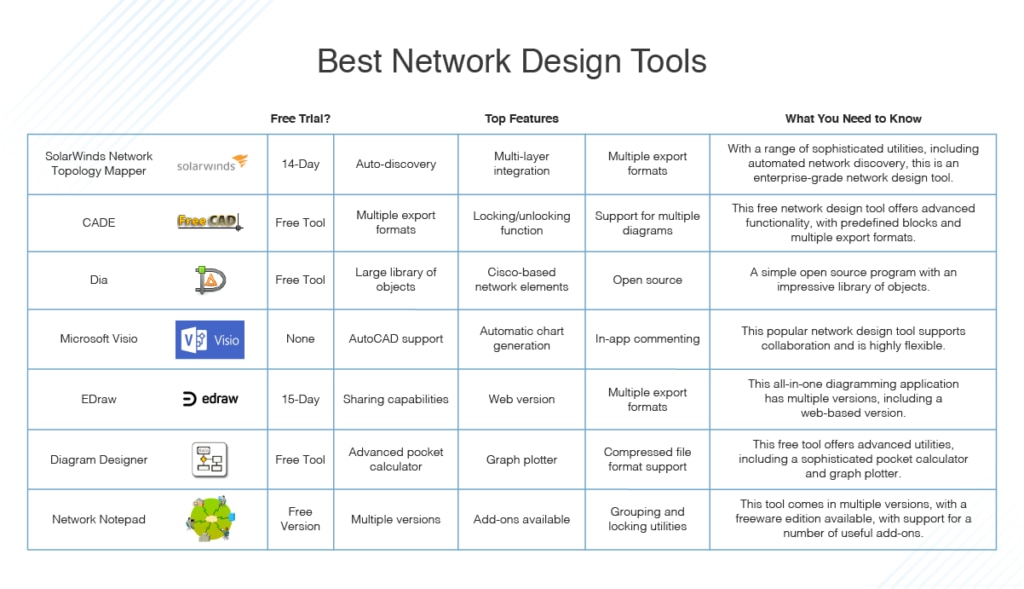
Skip to The Best Network Design Software list >>>
The Importance of Network Design
Because network design serves as the foundation for effective network monitoring, it directly informs your ability to maintain service quality. Without a comprehensive understanding of how your network components fit together, service quality maintenance becomes extremely difficult. This is why you need a topology map, which will give you visual insight into your network's exact structure.
A topology map is useful in gaining an in-depth understanding of how your hardware communicates and the speed at which packets are transferred and how this impacts quality of service. By creating a robust topology structure, you can establish a network that prevents single points of failure and minimizes bottlenecks.
With a topology map, identifying faulty devices becomes faster, more accurate, and less stressful. In a critical situation where rapid troubleshooting is required, effective network design and topology mapping can make all the difference.
What Is Network Design?
The phrase "network design" refers to how network infrastructure is planned and structured. The network design phase is normally executed by specialist network designers, IT administrators, engineers, or other IT professionals. It happens before the network infrastructure is fully implemented.
Network design is a complicated process involving evaluating and scoping the network to be implemented. The design process is typically depicted in the form of a network diagram, which is the blueprint for the physical implementation of the network. Network design will typically include the cabling structure, a logical map of the network to be implemented, the quantity of network devices, the type of network devices, the location of network devices, the IP addressing structure, and the network security architecture.
At the heart of all network design is the OSI network model, which comprises seven layers:
- Physical layer
- Data link layer
- Network layer
- Transport layer
- Session layer
- Presentation layer
- Application layer
When it comes to network topology, the lower levels of the OSI model are the most important, so this guide will focus on the first four layers. Knowing how these layers work will contribute to your understanding of how to design a network.
The Physical Layer
As its name suggests, this layer refers to all the hardware and equipment on your network that can be physically handled. This includes computers, cables, routers, printers, laptops, and everything in between. The physical layer also encompasses the wireless and electric signals. At the level of this layer, IT administrators or network designers should be focusing on ensuring devices are connected appropriately and there isn't too much distance between connected devices.
This is one of the most important layers for the network design process, especially if you're designing a network for a large, enterprise-scale environment. Equipment location will affect your service quality.
The Data Link Layer
Also called the logical link layer, this takes protocol data units, or PDUs, that have been transferred by the network layer and prepares them to be transmitted by a container. In an enterprise network, the Ethernet usually serves as the container, with most WAN providers using it to transmit your service. This layer is also used by wireless (IEEE 802.11) technology and the Address Resolution Protocol.
The Network Layer
The network layer determines the logical addressing and the direct path of every single communication. The software and devices functioning at the network layer level retrieve packets from a source and establish the route they'll take to their final destination. The network layer delivers data to the data link layer in a ready-to-transmit state.
The Transport Layer
The transport layer is responsible for transporting the data. All previous layers are involved in the process of addressing, routing, and delivery, while the transport layer determines how the information is broken down and delivered. It separates data into packets, reassembling them according to the direction they are traveling when appropriate, before sending them to the network layer.
Back to top
Best Network Design Software
So far, this guide has answered the questions of what network design is and why it's important. If you're looking for further network design help, employing appropriate network design tools can make the process less time-consuming, more efficient, and more successful overall.
I've ranked the following network design tools with consideration of their range and sophistication, user-friendliness, versatility, and cost-effectiveness. I have outlined their most notable benefits and any pitfalls you should be aware of.
-
SolarWinds Network Topology Mapper
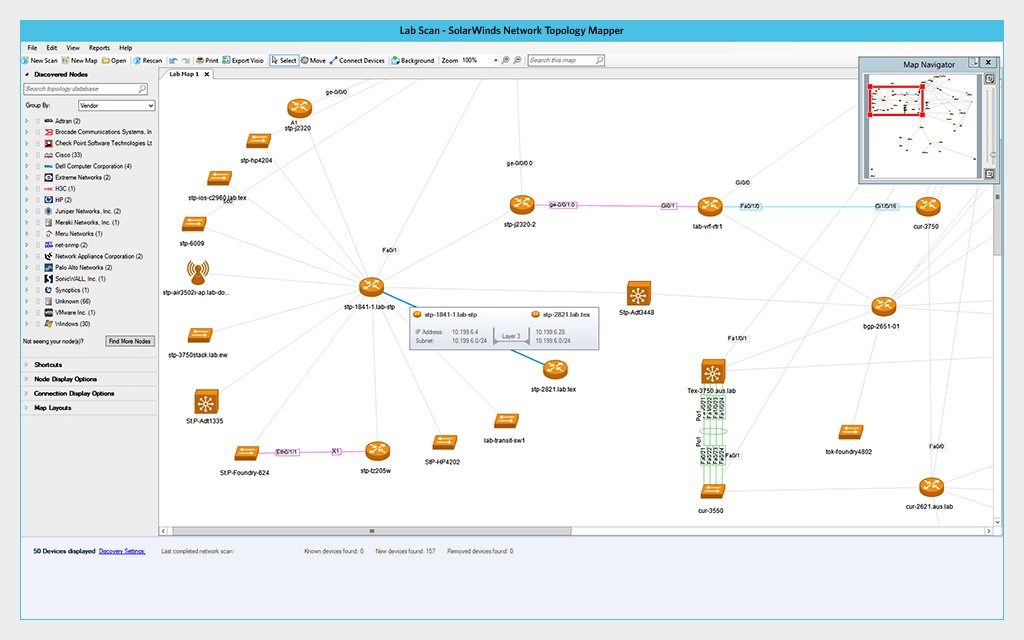
SolarWinds is a company with a reputation for creating some of the best IT monitoring and management programs on the market, including the well-known SolarWinds Network Performance Monitor, which most IT administrators are likely to be familiar with. The SolarWinds product range is known for dependability, user-friendliness, and an intuitively designed user interface. SolarWinds provides ample support to their customers, with technicians available 24/7 and a vast community of users accessible through the THWACK forum.
Network Topology Mapper (NTM) ranks highest on this list because it uses a unique multi-layer discovery technique to automatically discover your WAN or LAN. Typically in a matter of minutes, this network design software produces network diagrams integrated with OSI layer 2 and 3 topology data. This includes switch-to-node, switch-to-router, and switch-to-switch port connections, with other detailed device information. You can also use the auto-discovery capabilities to edit node details of map objects and connect network devices manually.
All this data can be easily exported in an easy-to-view format. Export file types include PDF, Microsoft Visio, and PNG. NTM can also schedule updated map exports to the Network Atlas feature, which you can use to create custom network maps and diagrams. Exports can then be shared with colleagues, so your whole team has visibility into your network topology.
This network design software supports network regulatory compliance. NTM is FIPS 140-2 compliant and allows you to directly address a number of regulations, including PCI, to ensure your network is up to date and audit-ready.
In addition to auto-discovery, NTM can automatically detect changes to your network topology. With scheduled scans, this tool keeps you informed of any new devices or changes. It also provides access to a range of reporting tools, including inventory and network reports, so you can stay on top of network information. Reports can be generated for VLANs, subnets, and switch ports, as well. Report creation can be fully automated, saving you time and resources.
This network design tool supports multiple discovery methods, including SNMP versions 1, 2, and 3; WMI; ICMP; CDP; Hyper-V; and VMware. This offers you a level of flexibility many network design tools don't provide.
As with other SolarWinds products, the user interface for Network Topology Mapper is easy to navigate. With so many automated features, you can have your network topology map ready in a matter of minutes. Manual intervention is possible, so you can tweak the settings to suit your specific requirements. This network design tool even allows you to manage the size and placement of icons and surrounding text on the topology maps.
Overall, the combination of user-friendliness and advanced capabilities makes Network Topology Mapper among the best of the network design tools on the market. Although it cannot support the complete network design process, the automated mapping capabilities serve as an important guide to all network design activities. If you want to try before you buy, a 14-day free trial is available.
-
CADE

CADE is both a 2-D vector editor and a topology mapper. This Windows-based suite of design tools resembles Microsoft Visio, allowing you to create your own custom diagrams and plot out your network topology. While this network design software could offer more in the way of automated capabilities, it does come with the advantage of being flexible. So, if you like to have complete control and prefer manual processes over automated ones, CADE is a good option.
CADE is a Windows program, but it's also available as a web-based user interface, which means you can access it from anywhere you have an internet connection. This is especially useful if you work from multiple devices or aren't often at your desk.
This versatile network design tool lets you draw maps, electric circuits, flowcharts, and more. It uses predefined blocks to make drawing easier, but also allows you to draw your own custom blocks. The predefined blocks are specifically designed to assist with 3D mapping, electronic circuits, office layout, and networks, so you can expect a suitable range.
The drag-and-drop functionality is easy to use, as is the ability to group, align, unalign, order, and rotate objects. If you register on the developer's website, you can publish your drawings online.
CADE features a locking/unlocking function, which allows more than one user to contribute to your network design processes at the same time. This means if you're scaling your network, juggling changes, or struggling to find the time to commit to network design, you can have other team members lighten the load. This reduces the amount of time you spend maintaining topology maps, boosts productivity, and encourages collaboration. Because multiple users can have access to CADE simultaneously, this also helps prevent mistakes caused by human error.
When your network topology map is complete, you can export it in different formats, including JPG, EMF, XAML, and PDF. The export can be sent to other team members for further analysis. The ability to export maps in a range of formats allows you to easily import them into other network design tools, if necessary, in addition to including them in presentations and documents.
CADE's design is basic, but it offers enough of a range of capabilities to be suitable to most businesses. However, upscaling would be easier if it offered auto-discovery and detect features. As a free program, CADE is generous, but can't achieve the same enterprise-grade offering as paid tools. You can download it here.
Back to top
-
Dia Diagram Editor
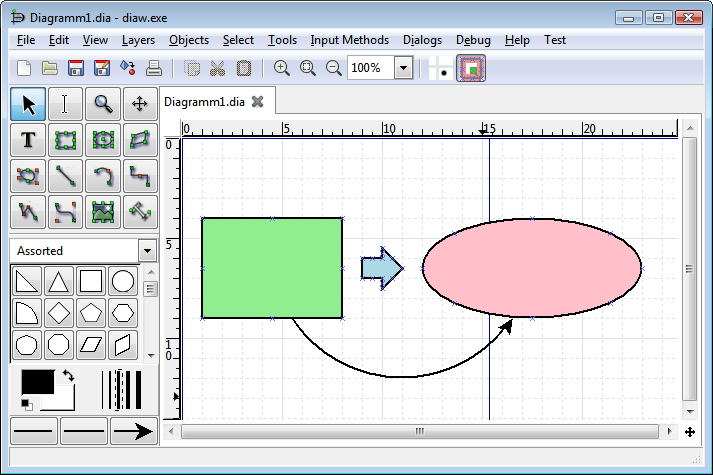
Dia is an open-source program for creating network diagrams quickly and intuitively. While this program doesn't have an especially advanced or dynamic interface, its simplicity is one of its main advantages.
Dia is a popular network design tool, largely due to its impressive library of objects. This gives you flexibility when creating topology maps and other diagrams. Dia also features a significant number of Cisco-based network elements, covering switch, network, computer, telephony, and miscellaneous diagrams.
As a free tool, Dia is highly functional. However, its user interface is rudimentary, and it isn't very scalable. It does, however, create high-quality diagrams. Dia Diagram Editor is available for Linux, Mac OS, and Windows. You can download it here.
-
Microsoft Visio
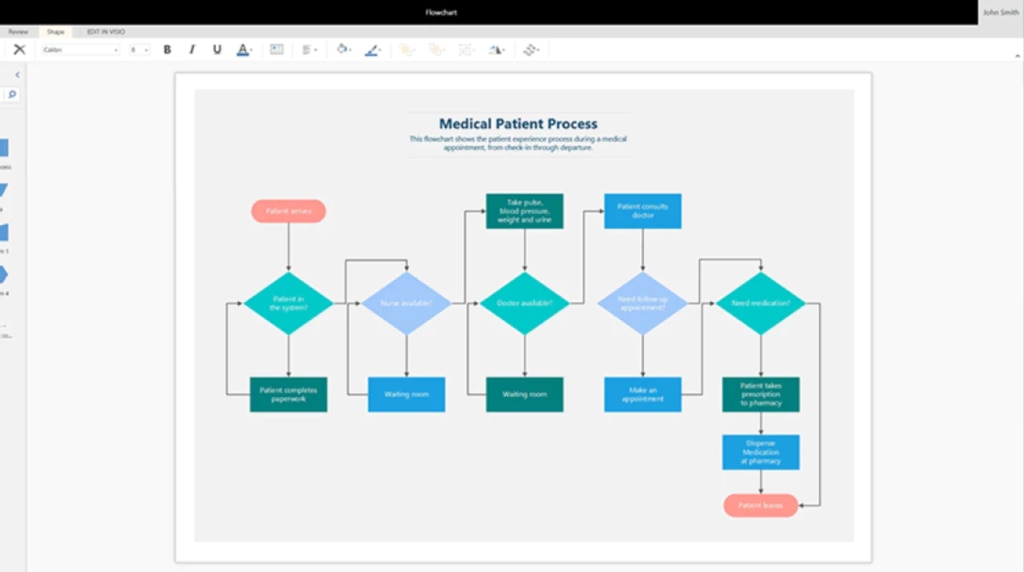
Microsoft Visio is among the best-known diagram mapping tools available and has been for many years. It's especially popular among network administrators, who are likely to use this program for device charting. Microsoft Visio offers a crisp and sophisticated user interface, along with a familiar aesthetic that adheres to the color scheme and layout of all the standard Microsoft Office products.
Microsoft Visio stands out because it offers a large bank of templates for you to choose from. You can download templates for data center setups and network devices, making the network design process faster and simpler. Templates include thousands of built-in "wireframes," customizable shapes for transforming data points into visual stories.
Visio supports collaborative network design processes, with an in-app commenting capability, so stakeholders and other key parties can contribute their thoughts directly to the diagrams. The program also supports sharing via SharePoint and OneDrive for Business, although you'll have to purchase these separately.
With automatic generation of organizational charts from multiple data sources, including Excel, Azure Active Directory, and Exchange, Visio can save you a lot of time. The program also features AutoCAD support, with the ability to import DWG files, even in enhanced file formats.
The best feature of Microsoft Visio is its flexible editing capability, which lets you alter the shapes of existing diagrams without losing the layout and shape connections. This means you can make changes without risking losing any of your previous work in the process.
This network design software has the bandwidth to handle small and large networks, so it's scalable and suited to enterprise-grade requirements. It's available for Windows 10 and Windows Server 2019, and can be purchased here.
Back to top
-
Edraw
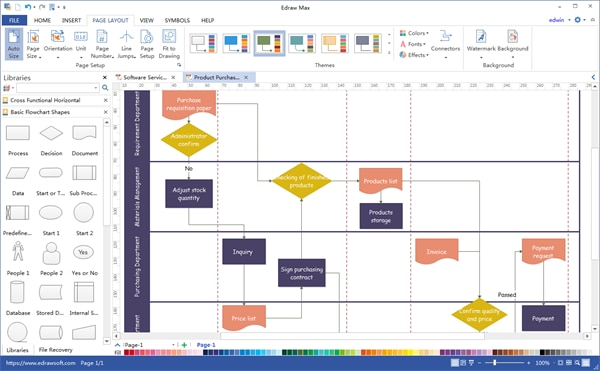
Edraw is a powerful, all-in-one diagramming application that allows you to draw fishbone diagrams, flowcharts, UML diagrams, floor plans, office layouts, and more. You can create more than 280 different diagram types, from infographics to technical drawings.
With a massive library of templates and symbols at your disposal, you can get started with network design immediately. There are thousands of templates, which are professionally and intuitively designed, to choose from. Edraw offers excellent file compatibility, so you can import Visio files and export your diagrams in a range of formats. This includes Visio, Word, PDF, HTML, JPEG, and more.
Edraw has recently released an online version, which is another major benefit, allowing you to access the program from anywhere, on any device and on any operating system. If you have access to the internet, Edraw is at your disposal.
This network design software facilitates collaboration by letting you share diagrams on social media via an HTML link. Because it's based on cloud storage, you can work on a project at the same time as other team members, while on multiple devices. You can access the Edraw download here, and choose between the Windows, Mac, Linux, or web versions of the program.
-
Diagram Designer
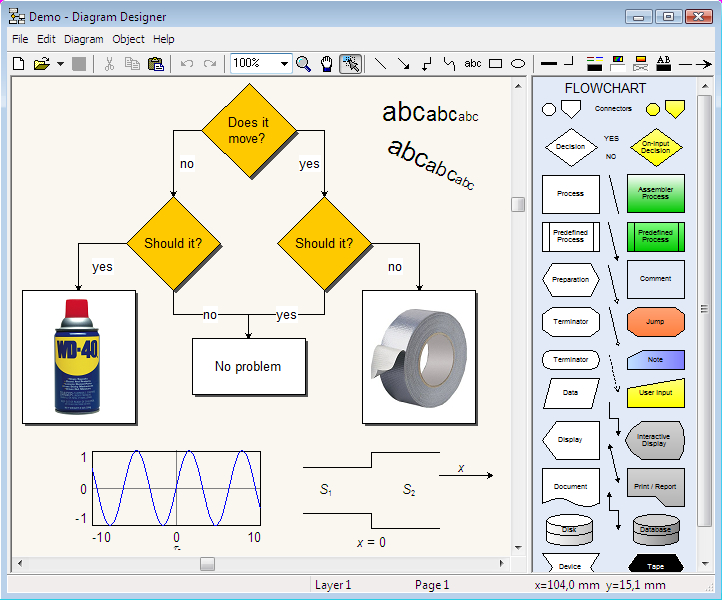
Diagram Designer is a free Microsoft Visio alternative. This simple vector graphics editor allows you to easily create illustrations, slide shows, UML class diagrams, and flowcharts.
This is a flexible tool, providing a customizable template object palette along with the ability to export and import in EMF, BMP, WMF, PNG, JPEG, MNG, GIF, ICO, and PCX files. The program is integrated with MeeSoft Image Analyzer, facilitating bitmap image editing and extended file format support. You can also use compressed file formats to reduce the size of drawings and diagrams. These features make Diagram Designer a highly versatile tool.
The advanced pocket calculator, with equation-solving capabilities, is one of the tool's best features. For freeware, this is a surprisingly sophisticated utility. The slideshow viewer and spell checker are other useful functionalities. Diagram Designer also features a graph plotter for plotting mathematical expressions in a simple way—a welcome utility that makes what would otherwise be a complex process much easier.
As freeware, this network design software isn't easily upscaled. However, if you're new to network design and want to try your hand at it, Diagram Designer is a great place to start. You can download the program here.
-
Network Notepad
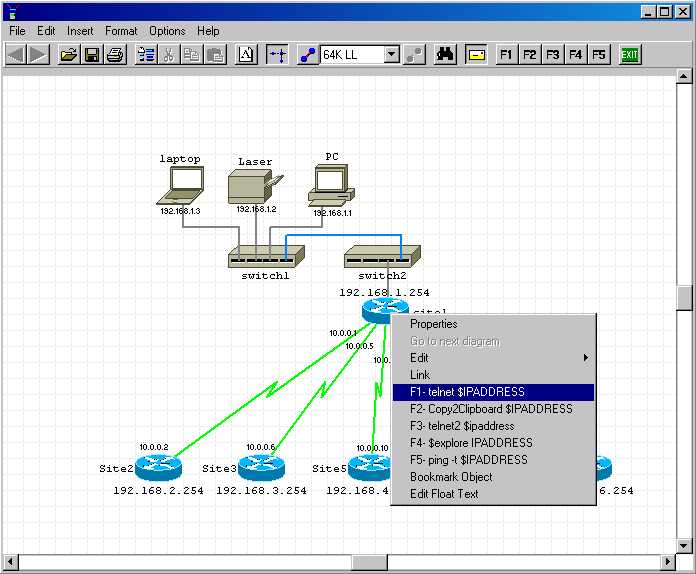
Network Notepad comes in numerous editions, including a freeware version, the Enterprise Edition, and the Professional Edition. The freeware version allows you to create interactive network diagrams, with some basic functionalities. Available for Windows, it features a simple drag-and-drop interface and supports the creation of linked diagrams and flowcharts.
Network Notepad Professional Edition includes the freeware features, plus tabbed multi-page diagrams, customizable shapes, improved graphics, grouping and locking functionalities, and the ability to rotate text and objects. The Enterprise Edition includes all the Professional features, in addition to facilitating multiple-user collaboration on network diagrams.
CDP Neighbor Tool is an add-on for all versions of Network Notepad. It allows you to discover and draw what's connected to your network devices by retrieving a table directly from the relevant device. There's also an add-on ping utility, called NNMonitor, which can be used with the Enterprise and Professional versions of Network Notepad. NNMonitor lets you monitor all the nodes in a document and supports logging and email alerting. These add-ons are useful and among the best features of the tool. However, they're not built in and must be downloaded separately.
You can access and download all the Network Notepad editions here.
Choosing the Right Network Design Tool
SolarWinds Network Topology Mapper tops the network design tools on this list. NTM is a great facilitator for robust, accurate, and efficient network design. The auto-discovery feature sets this tool apart from others, because it requires the least manual intervention.
SolarWinds NTM saves IT administrators and network designers ample time and resources, delivering a user-friendly and sophisticated topology mapping solution. Reporting tools, multiple export options, and multi-layer integration of topology data make it a highly scalable enterprise-grade program, suited to small and large businesses alike. Click here to access the 14-day free trial.
Design And Technology Tools And Their Uses
Source: https://www.dnsstuff.com/network-design-tools
Posted by: morrisonwastoponcen.blogspot.com

0 Response to "Design And Technology Tools And Their Uses"
Post a Comment